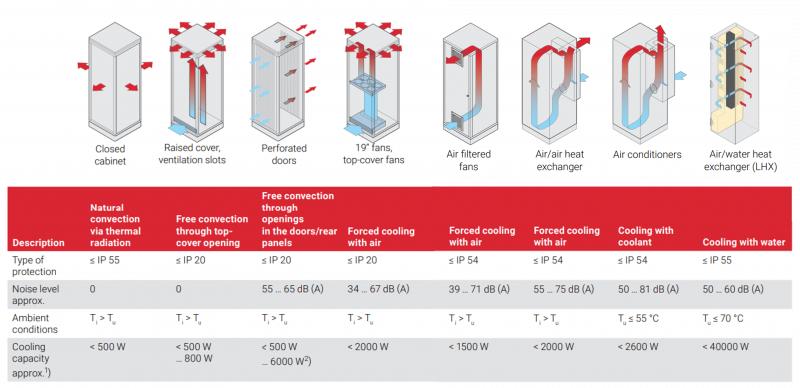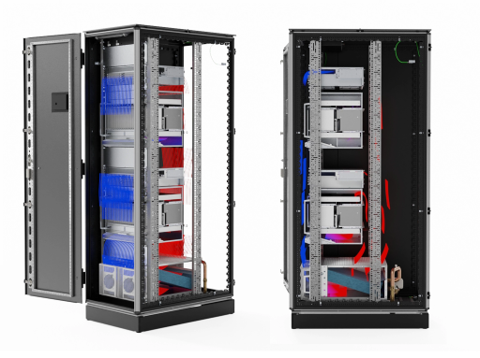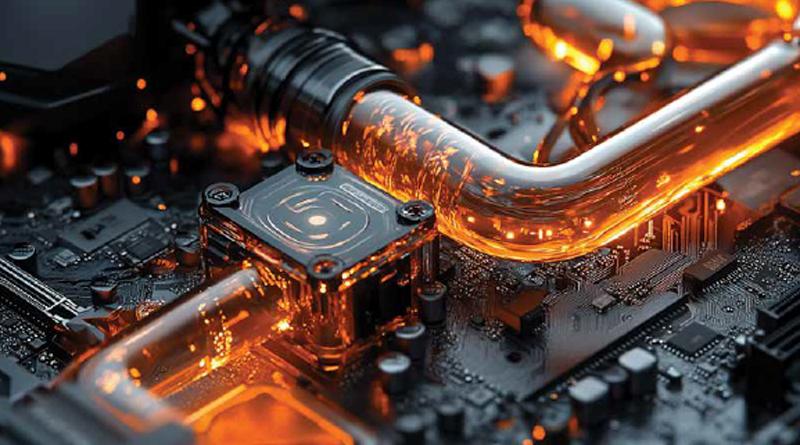Protecting Advanced Electronics Across Multiple Domains
By Matthew Tarney is the Global Vertical Growth Leader for Aerospace & Defense at nVent SCHROFF.
Modern electronics are rapidly changing the battlespace across all domains. Upgrades to C5ISR and electronic warfare systems are driving adoption of newer, faster, and hotter processors in every armed forces branch and every major defense platform. These improved electronics, while revolutionary to their applications, require careful design consideration to ensure they operate reliably and at peak efficiency in a wide array of challenging environments.
Challenges when Designing Multi-Domain Systems
For an electronics system to be effective in a given combat domain, its packaging (the physical housing, thermal management, and method of installation) must meet rigorous design requirements. In the past these requirements were typically met with highly customized rugged chassis, cabinets, and other physical infrastructure. Recent efforts by the DoD to reduce cost and increase standardization across branches has made these program-specific designs less attractive. Initiatives requiring standardized hardware and interoperability, like MOSA, SOSA, and CMOSS, have led many designers to transition away from custom designs toward “MOTS” or modified-off-the-shelf electronics infrastructure.
The challenge with selecting a MOTS design lies in finding systems that are suitable for multiple domains and programs. Every project has unique environmental requirements that must be met. Space applications require low-outgassing and radiation hardened components. Naval applications require high levels of shock and vibration resistance. Sensitive communications hardware requires advanced EMC protection. Due to the numerous and often overlapping MIL standards defining the attributes required for defense electronics applications, it’s vitally important to select the appropriate housing and infrastructure when designing or upgrading defense electronics systems.
What to look for when selecting rugged electronics packaging
While there are many factors to be considered for each application, there are some commonalities that must be considered for every design:
- Form factor: Every application will have a designated form factor that will greatly impact the overall system design. If electronics are being retrofitted into an existing system, the design may be space constrained. Increasing processing speed in the same form factor results in higher heat densities, which creates cooling challenges. New designs may be intended for use across multiple programs, and need to meet the requirements of land, sea, and air-based platforms. Specifying a form factor early in the design process helps
- Interoperability: While many companies offer electronics solutions for the defense market, very few if any can offer a complete, integrated system ready for installation. It is critical that the components selected for each application, from the board through to the chassis, cabinet, and cooling system, are interoperable and compatible. Specifying alignment with open systems standards like SOSA, MOSA, and CMOSS ensures that systems comprised of parts from multiple vendor will not only be interoperable now, but are designed for easy upgrades in the future.
- MOTS v. Custom design: Selecting an electronics packaging platform based on a COTS product comes with significant advantages. Cost, lead time, and availability of components are often improved when selecting COTS or modified COTS products over custom designs. Less NRE and design time means projects are completed faster and at less expense. Designing around MOTS electronics hardware also allows systems engineers to modify electronics packaging to meet specific application requirements while ensuring that the majority of components for their system will be commercially available for the life of program.
 Standards for Defense Electronics Systems
Standards for Defense Electronics Systems
The United States Department of Defense (DoD) maintains a comprehensive list of standards for equipment deployed in military applications. By selecting equipment qualified to these standards, design engineers can ensure COTS solutions already meet the minimum requirements to protect critical systems. Several standards directly address challenges found in defense electronics applications:
- MIL-DTL-901E: This standard replaces MIL-S-901D, which was the DOD standard for mechanical shock testing from 1989-2017. The new 901E standard specifies test criteria for high-impact shock testing to ensure enclosures can withstand harsh operation and combat environments, protecting mission critical equipment when reliability is most needed.
- MIL-STD-167-1A: Mechanical vibration testing for ensures the enclosure and electronics within operate reliably while experiencing vibration from common sources, including engine vibration across a range of frequencies.
- MIL-STD-461G: EMC testing ensures that the enclosure provides protection against external EMI as well as effective containment of emissions generated within the cabinet. Radiated and line emissions have the potential to transmit data that can be intercepted and exploited by adversaries, making effective electrical shielding imperative for sensitive communications equipment. In some cases protection beyond MIL-STD-461G is required, up to and including TEMPEST level signal protection.
- MIL-STD-810G: Environmental tests are critical to ensuring equipment will operate reliably in its intended domain. This MIL standard includes 29 different test methods to evaluate electronic systems. Common test include those for altitude, temperature, ingress protection, corrosion resistance, acoustic noise, shock, and vibration.

In addition to the standards listed above, DOD publishes dozens of standards addressing specific application environments. As every system is different, it is critical to specify compliance to a complete range of standards that address the unique requirements of a given installation.
Every Application is Unique
Standard testing can help provide peace of mind that common hazards have been considered in the design of an electronics enclosure. However, standards can’t address every possible condition a given platform may encounter. In addition to specifying enclosures that meet the tests above, design engineers can benefit from solutions that are modular, scalable, and customizable, but based on a common platform architecture. This MOTS approach ensures that components are readily available while still allowing an enclosure to be modified to meet specific application needs. Common electronics enclosure modifications include:
- Custom vibration dampening and isolation
- Modified I/O and cable entry panels
- Active and passive cooling solutions
- Ruggedized power distribution
- Physical and electronic access control systems
- TEMPEST certification for sensitive communications
- EMC shielding
- Fire suppression systems
- Cable management and organization
Many of these unique application requirements call for specialized engineering during the design process to ensure the reliability of electronics in harsh conditions. A Finite Element Analysis should be performed for all enclosures mounted on vibration isolators to ensure reliable performance and appropriate tolerances under stress. Advanced thermal modeling is becoming increasingly necessary to ensure proper cooling of electronics as more computing power is being deployed in the space-constrained applications. Even simple considerations such as the bend radius clearance for cables inside the enclosure can cause significant installation problems if overlooked during the design process. Because every application is unique, starting with an easily modified COTS enclosure platform can reduce redesign time and improve supply chain resilience, while increasing confidence that electronics are prepared for any environment.
Thermal Management
Modern electronics cabinets require robust thermal management systems. The implementation of advanced EW and C5ISR systems requires high speed, high availability computing hardware. This often results in higher densities that in the past. Traditional cooling methods such as convection and forced air are often insufficient to handle this increased thermal load. Designers need to rely on a full suite of cooling systems, from convection to liquid cooling, to successfully run modern electronics:
- Convection: Suitable for cooling up to 800W per rack, depending on ambient air temperature. Requires louvers or perforations to allow airflow into and out of the cabinet. Hot exhaust air must be vented away from the computer room or actively cooled
- Forced Air: Suitable for cooling up to 2000W per rack, depending on ambient air temperature. Requires louvers or perforations to allow airflow into and out of the cabinet. Hot exhaust air must be vented away from the computer room or actively cooled.
- Air Conditioners: Suitable for cooling up to 2600W per rack. Best for applications where the ambient air is not actively cooled or is inconsistent in temperature.
- Liquid Cooling: Suitable for cooling up to 45000W (45kW) per rack. Liquid cooling can allow extremely high computing density per rack, optimizing space in the computer room and reducing the number of racks required on a vessel. Cold ambient air is not required, and the system can operate as a closed loop in a sealed cabinet. Cool water is required from the ship to act as coolant in the air to water heat exchanger.
Quality and Compliance
A final consideration is ensuring compliance to DFARS sourcing requirements and project flow downs. When selecting a supplier partner for naval electronics infrastructure it is critical to ensure that all relevant quality and sourcing requirements can be met. Common supplier considerations in the naval electronics market include:
- Compliance to DFARS material traceability requirements
- International Traffic in Arms Regulation (ITAR) certification
- ISO and AS9100 quality certifications
- A robust counterfeit parts prevention program
- First article inspection procedures
- A life cycle management program ensuring that once specified, equipment will be available and supported for the lifetime of a program
Summary
Ensuring the reliability and availability of electronic systems is critical to military readiness. While every application is unique, there are several ways that design engineers can address common mechanical, electrical/electromagnetic, and environmental challenges when specifying electronics enclosures. Ensuring that equipment meet relevant MIL specifications, has been analyzed for physical and thermal performance, is customized to the application’s unique requirements, and are sourced from a supplier with robust quality controls all deliver peace of mind that mission-critical electronics equipment can withstand the harshest applications.
 About the Author
About the Author
Matthew Tarney is the Global Vertical Growth Leader for Aerospace & Defense at nVent SCHROFF. In this role he is focused heavily on finding solutions to the thermal challenges facing electronics in the Aerospace and Defense space.
About nVent SCHROFF
nVent Electric is a leading global provider of electrical connection and protection solutions. We believe that safer systems ensure a more secure world. We design, manufacture, market, install and service high-performance products and solutions that connect and protect some of the world’s most sensitive equipment, buildings and critical processes. We operate three business segments: Electrical & Fastening Solutions, Thermal Management, and Enclosures.
The nVent SCHROFF brand is nestled within the Enclosures business segment of nVent. SCHROFF contains a broad portfolio of products from printed circuit board (PCB) accessories, such as card retainers, conduction cooled frames, front panels and handles to subracks, cases, backplanes, power supplies, cabinets and pre-assembled chassis for embedded computing systems. nVent SCHROFF includes the Calmark and Birtcher product lines and has been a world leader in electronics packaging for over five decades. Calmark-Birtcher products have been used by top defense and aerospace manufacturers in rugged PCB retention and cooling applications for over 40 years.

